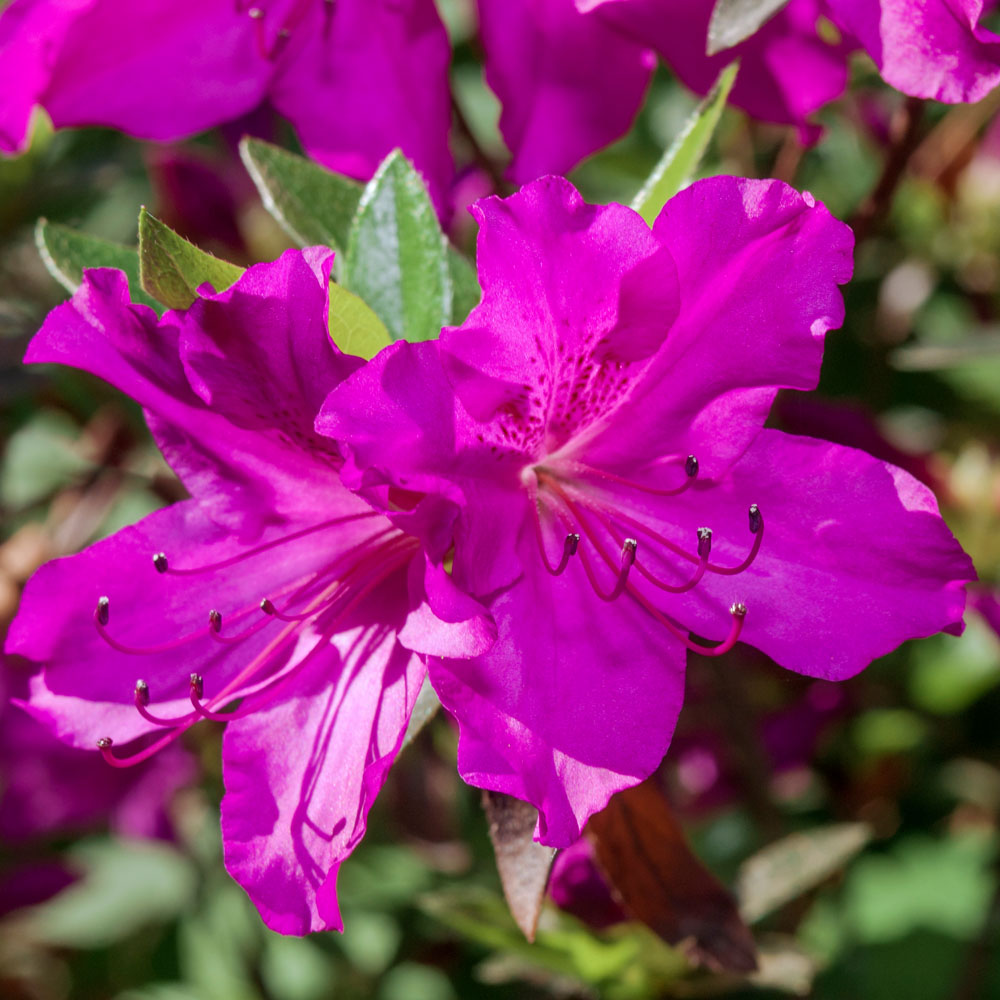Description
Azalea ‘Blue Danube’ is a compact shrub that grows up to 1 meter in height and width. Its blue-violet flowers bloom in mid to late spring and are semi-double, with ruffled petals that add to their visual interest. This variety prefers acidic soils and partial shade, and can be grown in containers or as a low hedge. As an azalea, it is known for its showy flowers and attractive foliage, making it a popular choice for gardens and landscapes.
Key Facts
- Common Name(s):Azalea ‘Blue Danube’
- Hardiness:Fully hardy
- How big will I get? Rhododendron ‘Blue Danube’ can grow to a height of 1m and a spread of 1m.
- Did You Know That:Rhododendrons belong to the heath family and are related to blueberries, cranberries, and heathers?
Plant Calendar
A rough guide to how this plant will change through the year.
| Jan | Feb | Mar | Apr | May | June | July | Aug | Sept | Oct | Nov | Dec | |
| Flowering Time |  |
 |
||||||||||
| Foliage Colour |  |
 |
 |
 |
 |
 |
 |
 |
 |
 |
 |
 |
| J | F | M | A | M | J | J | A | S | O | N | D |
 |
 |
||||||||||
 |
 |
 |
 |
 |
 |
 |
 |
 |
 |
 |
 |
Care Guide

Soil Requirements
Rhododendron ‘Blue Danube’ prefers moist but well-draining soil. This plant requires acidic soil to thrive and cannot grow in neutral or alkaline soil conditions.

Best Position
Rhododendron ‘Blue Danube’ prefers a sheltered position and likes the sun but not too much of it, so an area that is partially shaded is perfect.

Maintenance
Rhododendron ‘Blue Danube’ is fairly low maintenance and doesn’t require any pruning.

Pest, Diseases and Wildlife
Rhododendron ‘Blue Danube’ can have problems with scale insects, caterpillars, vine weevil and aphids, it can be vulnerable to certain diseases such as powdery mildews, honey fungus and silver leaf. It is also known to attract bees and butterflies. It is considered to be toxic.





